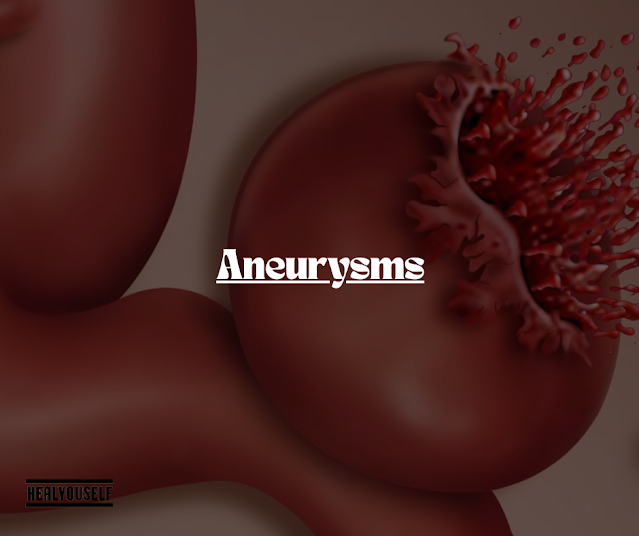Aneurysms Understanding the Silent Threat
Introduction
An aneurysm is a bulge in the wall of a blood vessel, typically occurring in arteries. They can develop anywhere in the body but are most common in the aorta, brain, legs, and spleen. Aneurysms are often referred to as "silent threats" because they can grow without causing any symptoms until they rupture, leading to life-threatening complications. This article explores the types, causes, symptoms, diagnosis, treatment, and prevention of aneurysms.
Types of Aneurysms
Aortic Aneurysm:
- Thoracic Aortic Aneurysm (TAA): Occurs in the part of the aorta that passes through the chest.
- Abdominal Aortic Aneurysm (AAA): Occurs in the part of the aorta that passes through the abdomen.
Cerebral Aneurysm: Also known as a brain aneurysm, occurs in the blood vessels of the brain.
Peripheral Aneurysm: Occurs in the arteries other than the aorta, such as in the legs (popliteal aneurysm), spleen (splenic aneurysm), or neck (carotid aneurysm).
Causes and Risk Factors
Aneurysms can be caused by a variety of factors, including:
- Genetic Factors: Family history of aneurysms can increase the risk.
- Atherosclerosis: Build-up of plaques in the arterial walls can weaken the vessel wall.
- High Blood Pressure: Chronic hypertension can strain the blood vessel walls.
- Infection: Certain infections can cause arterial walls to become weak.
- Trauma: Injury to the blood vessels can lead to aneurysm formation.
- Lifestyle Factors: Smoking and excessive alcohol consumption are significant risk factors.
Symptoms
Aneurysms often grow slowly without any symptoms. However, if an aneurysm ruptures, it can cause severe symptoms, including:
- Thoracic Aortic Aneurysm: Sudden, severe chest or back pain, difficulty breathing, coughing, hoarseness.
- Abdominal Aortic Aneurysm: Sudden, intense abdominal or back pain, pulsating feeling near the navel.
- Cerebral Aneurysm: Sudden, severe headache, nausea, vomiting, stiff neck, blurred or double vision, sensitivity to light, seizure, loss of consciousness.
Diagnosis
Early detection of an aneurysm is crucial for effective treatment. Diagnosis may include:
- Physical Examination: Checking for physical signs of aneurysm.
- Imaging Tests: Ultrasound, CT scan, MRI, or angiography can visualize the aneurysm.
- Genetic Testing: For those with a family history of aneurysms.
Treatment
Treatment depends on the size, location, and growth rate of the aneurysm. Options include:
- Monitoring: Small, asymptomatic aneurysms may be regularly monitored with imaging tests.
- Medications: Drugs to lower blood pressure and cholesterol can reduce the risk of rupture.
- Surgery:
- Endovascular Repair: A minimally invasive procedure where a stent-graft is placed inside the artery.
- Open Surgery: Removal of the aneurysm and replacement with a synthetic graft.
Prevention
Preventing aneurysms involves managing risk factors:
- Healthy Lifestyle: Eating a balanced diet, exercising regularly, and avoiding smoking and excessive alcohol consumption.
- Regular Check-ups: Especially for those with a family history of aneurysms or other risk factors.
- Blood Pressure Control: Maintaining a healthy blood pressure through lifestyle changes and medications if needed.
Conclusion
Aneurysms are a serious health concern due to their potential to rupture and cause life-threatening complications. Understanding the risk factors, recognizing symptoms, and seeking prompt medical attention can greatly improve outcomes. With advances in diagnostic techniques and treatments, the prognosis for individuals with aneurysms has significantly improved.
Sources
- Mayo Clinic: Aneurysm
- National Heart, Lung, and Blood Institute (NHLBI): Aneurysms
- Johns Hopkins Medicine: Aneurysm Overview
- Cleveland Clinic: Aneurysm: Causes, Symptoms, and Diagnosis
This article provides a comprehensive overview of aneurysms, highlighting the importance of awareness and early intervention in managing this potentially fatal condition.

